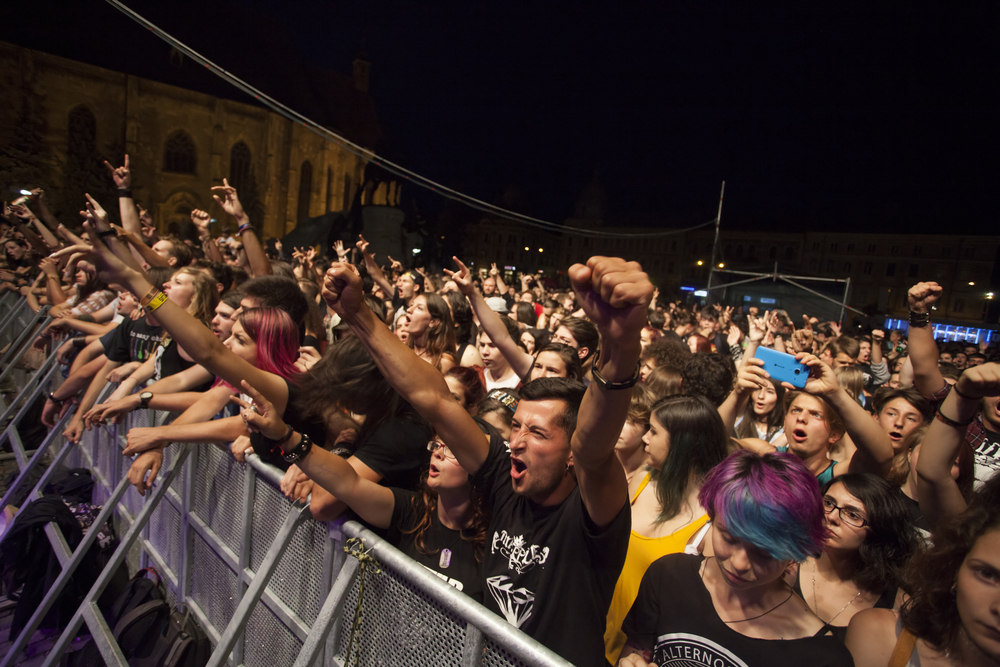Hard Rock’s global music legacy unites fans through powerful anthems, community, and concerts celebrating freedom, passion, and shared emotional experience.
Unity by Hard Rock’s: A Closer Look

Hard rock has long been a genre known for its powerful sound and intense emotion. The music speaks to themes of struggle, defiance, and togetherness. Over the decades, this genre has cultivated a sense of unity among its listeners. From the roaring sounds of electric guitars to the passionate lyrics, hard rock creates an environment where fans can find common ground.
Origins of Unity in Hard Rock
The roots of hard rock can be traced back to the late 1960s. Bands like Led Zeppelin, Deep Purple, and Black Sabbath laid the groundwork. These groups combined elements of blues, rock, and even classical music. As they pushed boundaries, their music resonated with a wide audience. Fans experienced a collective sense of identity. Amidst social turbulence, music became a unifying force.
Concerts played a pivotal role in fostering unity. During live performances, the energy and connection among fans and bands were palpable. Everyone shared an experience that transcended individual differences. Common goals, passions, and values emerged within this community. These interactions helped build a culture unlike any other.
The Role of Lyrics and Themes
Lyrics in hard rock often explore themes of freedom, resilience, and rebellion. Such messages resonate deeply with fans facing various life challenges. The struggle against personal and societal constraints often finds expression in hard rock anthems. Listeners about fighting against all odds, encouraging unity in the face of adversity. It’s not uncommon to hear chants of we’re all in this together during concerts.
For example, songs like We Will Rock You by Queen or Livin’ on a Prayer by Bon Jovi become more than just music. They become rallying cries for audiences who find solace and strength in numbers. Themes of overcoming barriers make hard rock anthems timeless and universally relatable. The lyrics help listeners feel seen, heard, and understood.
Band Dynamics and Fan Engagement
Bands themselves often embody a spirit of unity. Collaboration among band members is essential in creating quality music. Each member brings a unique skill, yet the group functions as a whole. These dynamics mirror the unity seen among fans. The visible camaraderie on stage fosters a similar bond off stage.
Fan engagement goes beyond just listening to music. Participating in fan clubs, attending concerts, and wearing band merchandise can be acts of unity. Fans might queue for hours to get a good spot at a concert, enduring weather and discomfort together. These shared experiences become cherished memories, strengthening the sense of belonging.
Furthermore, social media has broadened the scope for fan interaction. Platforms like Twitter, Instagram, and fan forums provide spaces for fans to connect. Through memes, discussions, and updates, the unity once felt only in concert halls now spans continents.
Impact of Technology and Media
Technology has left a notable mark on how unity manifests in hard rock. In the past, radio stations and record shops were gateways to discovering new music. Now, streaming platforms make it easier to access a global music library. Technology allows for a broader reach and brings the genre to new ears.
Media coverage also plays a role in sustaining unity. Documentaries, interviews, and behind-the-scenes footage provide insight into a band’s life. This content humanizes the artists and increases the appeal and connection fans feel. The stories behind the music enable a deeper appreciation of the art and artists involved.
Hard Rock Festivals: Melting Pots of Unity
Festivals are monumental gatherings where unity through hard rock is visible on a grand scale. Events like the Download Festival and Rock am Ring attract thousands of attendees from around the globe. At these festivals, fans converge with a shared passion for music.
The festival atmosphere is one of camaraderie. Despite coming from diverse backgrounds, attendees unite over a mutual love for hard rock. Friendships form, traditions continue, and new ones emerge. The sense of community at these events often reflects the core message of the music itself: despite differences, unity prevails.
Challenges and Inclusion
Hard rock, like any community, faces challenges in maintaining unity. Inclusion is a prominent issue. Early perceptions of the genre tended to portray it as somewhat exclusive. However, recent efforts aim to broaden this representation. Efforts are made to be more inclusive of different genders, ethnicities, and backgrounds.
Bands increasingly use their platforms to address issues such as racism, sexism, and mental health. They advocate for change, underscoring the importance of unity in diversity. This broadened focus aligns with modern social values, making the genre more appealing to a diverse audience.
Unity Beyond Music
Hard rock’s influence often spills over into activism and social causes. Artists and fans support various initiatives, using their collective voice to spark change. Charity concerts, benefit albums, and awareness campaigns often see collaboration from the hard rock community.
The unity felt through music serves as a foundation for greater societal impact. The spirit of solidarity cultivated within the genre extends to real-world actions. This empowered following continues to leverage the platform hard rock offers to advocate for societal and cultural shifts.
Legacy and Future
As the landscape of music evolves, hard rock remains fundamental. The genre’s ability to foster unity in a multifaceted way ensures its relevance. Emerging bands continue the tradition of life-affirming messages, colorful riffs, and explosive performances. The ever-growing community stands testament to its lasting impact.
The future holds opportunities for the hard rock community to grow even more inclusive and connected. While challenges remain, the built-in sense of unity provides a sturdy foundation. With each new generation of fans and bands, the drive for unity persists, proving the genre’s resilience and enduring appeal.





